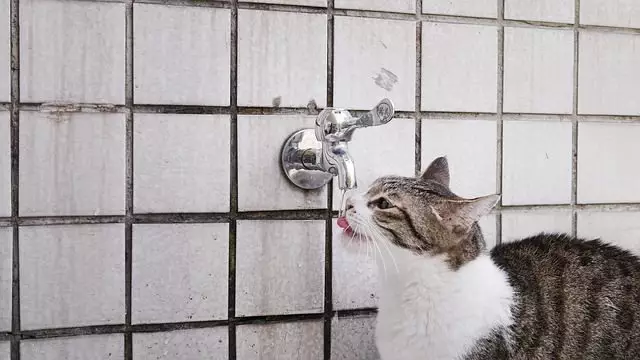Cats are notoriously particular creatures, often exhibiting surprising behaviors that can leave their owners scratching their heads. One curious quirk is their apparent preference for drinking from a dripping faucet rather than the designated water bowl. This article explores the historical, behavioral, and environmental factors that contribute to this preference, ultimately shedding light on how to ensure your feline friend stays hydrated.
To comprehend why cats might favor running water, we must delve into their evolution. Cats, both domesticated and wild, are descendants of solitary hunters. In their natural habitat, they derived sufficient moisture from the prey they consumed, which means that drinking from a water source was seldom necessary. This evolutionary background has shaped their instincts considerably. Unlike dogs, who may eagerly drink from any available source, cats are often more discerning. The modern domestic cat may not instinctively seek out water, leading to potential dehydration concerns in environments where they are primarily fed dry food.
Cats possess an acute sense of hearing that is far superior to that of humans. The delicate sound of running water is not only more appealing but also easier to detect compared to the near-silent water in a bowl. This auditory stimulus may cue their instincts, triggering curiosity and encouraging them to explore the source. Additionally, the sight of a clear stream can be more attractive than still water, which may look stagnant and uninviting. For cats, a dripping faucet or a flowing fountain may mean fresher, cleaner water—a factor that is vital for their wellbeing.
The social dynamics in a multi-cat household can also influence drinking behavior. Cats are instinctively cautious animals, especially when it comes to potential threats. When a cat drinks from a bowl on the ground, it may feel vulnerable and exposed to other cats. This instinct might encourage them to seek out a less risky location, such as a sink or faucet where they can drink while keeping an eye on their surroundings. To accommodate this instinct, consider placing water bowls in quieter and more secluded areas of your home—away from food and potential confrontations.
In their natural habitats, cats have learned to avoid standing water due to the risk of microbial contamination. Running water is often perceived as cleaner and safer, significantly minimizing the chances of ingesting harmful bacteria. This preference for fresh, moving water is not merely a caprice; it is a survival mechanism honed through generations of evolution. Understanding this can guide cat owners towards selecting water sources that match these preferences, such as automatic drinking fountains, which can keep water circulating and fresh throughout the day.
Cats are also known to have strong preferences regarding the temperature of their drinking water. Water from a faucet can be warmer or cooler than stagnant bowl water, making it potentially more appealing. To experiment with temperature, owners can consider adding ice cubes to water bowls or offering bottled or filtered water, which may entice the feline to hydrate more freely.
Dehydration is a real concern for many cats, especially those who predominantly eat dry food. To keep your kitty well-hydrated, it is essential to explore various options. Investing in a cat fountain not only provides a continuous flow of water but also turns hydration into a more engaging experience for your pet. By elevating their drinking game, pet owners can alleviate any concerns regarding hydration levels.
It is essential to recognize the multifaceted reasons behind a cat’s preference for running water. By understanding the historical, sensory, and situational factors at play, owners can create an environment that promotes hydration and overall health. Observing these behaviors not only enhances the connection between pet and owner but also contributes to a happier, healthier feline companion.

